- How to Install AAC Conductor
- Power cable current carrying capacity
- Guide on Low Voltage Aerial Bundling Cables(ABC Cab
- Guide to Electrical Insulators
- The difference between 3 + 2 and 4 + 1 on wires and
- What are the cable accessories?
- AWG (American Wire Gauge) to MM2 Conversion
- Cable Short Circuit Current Calculate
- Overhead conductor,poles,and gold fittings design
- OPGW Cable Line Design Several Key Issues[2]
E-Mail:info@dosensecable.com
Phone:+8613073786551
Tel:+8613073786551
Add:Zhengzhou, Henan,China
Overhead conductor,poles,and gold fittings design
1. Characteristics of overhead Lines
The main components such as conductor lightning conductor, pole (pole tower), insulator string and fittings, and the significant advantages of overhead line: simple line structure, short construction period, low construction cost, large transmission capacity, convenient maintenance and repair.
1) Bare Conductor There are 2 kinds of commonly used wire materials: aluminum and steel, and three kinds of wire structure of overhead line: (1) single metal multi-strand wire (2) composite metal multi-strand stranded wire, so in fact the overhead line is used multi-strand stranded wire. Its advantages are: ACSR has better mechanical strength, and has higher conductivity. Therefore, steel-cored aluminum stranded wire is widely used in 35KV and above lines. type of overhead line: it is composed of three parts: conductor material, structure and current-carrying cross-sectional area.
2) Ground wire The Ground wire is usually galvanized steel strand with high strength. According to operation experience, different kinds of ground wire can be used 110kV and above, 220kV-330kV and above in mountainous areas 60kV critical load lightning for 30 days
Generally speaking, the higher the voltage, the greater the transmission power, the farther the transmission distance. For example: 35kV overhead power line, the transmission distance can reach 50km, the general transmission power is 10,000 ~ 20,000 kW; The transmission distance of 110kV line can reach 100km, and the transmission power is 30,000-60,000kW. The rated voltage grade of the power system is: 500kV, 330kV, 230kV, 220kV, 132kV, 110kV, 66kV, 35kV, 10(20)kV, 380 (220) V, etc.
2. Overhead line, some terms related
1) The horizontal distance between the hanging points of adjacent tower conductors is called the distance between gears.
2) The maximum distance in the plumb direction between any point of the plumb conductor and the hanging point
3) The minimum distance between the wire and the ground is called the limit distance.
4) Corona phenomenon is the partial discharge of charged body surface in gas or liquid medium. It usually occurs in the area with high electric field intensity in uneven electric field (such as around high-voltage wire, the tip of charged body is near). It is characterized by the appearance of a halo similar to the light layer, sound, ozone, nitrogen oxide and so on.
5) jumper connected to bearing tower (tension, corner and terminal tower) on both sides of the wire lead, also known as flow line or bow line
6) Wire (ground) vibration In the line distance, when the overhead line is affected by the wind perpendicular to the line direction, a stable eddy current alternating up and down at a certain frequency will be formed on the leeward side of the overhead line. Under the action of the component of eddy lift force, the overhead line produces periodic oscillation in its vertical plane, which is called overhead line vibration
7) conductor transposition transmission lines of wire arrangement, in addition to the regular triangle, three wire is not equal to the distance between the line, the reactance of the wire depends on the radius and the distance between the line, therefore, wire such as without transposition, three-phase impedance is not balanced, the longer the line this imbalance, thus produce unbalance current and voltage, Adverse effects on generator operation and radio communication. Transmission lines "in a power network with a neutral point directly grounded, all transmission lines exceeding 100km in length shall be transposed." Wire transposition is generally carried out in transposition tower.
3. Types of poles, towers and gold fittings
Overhead power lines are supported by reinforced concrete poles, iron towers and this pole, collectively known as poles and towers. Linear pole tower is also called intermediate pole tower, used for the middle part of the line line. Such towers in flat areas, generally accounted for about 80% of the total number of towers. Tensioning tower - also known as bearing tower, compared with linear tower, its strength is larger, can withstand the tension of wire and ground wire. Tensioning tower separates the line into several tensioning sections for easy construction and maintenance. 10 kV 1-2 km 35-110 kV for 3 to 5 km Corner pole tower is used for the turning of the line, there are two kinds of straight line and tensioning type.
1) Terminal tower is located at the first and end of the line. That is, the power plant or substation into line, line out of the first base tower.
2) The pole tower is located at the place where the line crosses with rivers, valleys and railways. Divided into straight and tensioning type.
3) Transposition tower is used for transposition of wires. It is divided into straight line transposition tower and tensioning transposition tower for rolling transposition.
the metal in the overhead transmission line support, fastening, connection, protection wire and lightning line for Angle, and can pull wire fastening.
1) Support, that is, hanging line clamp, hanging line clamp according to its performance can be divided into fixed and release type two. Fixed overhang clamp is suitable for conductor and lightning conductor. Release wire clip Angle > 30 wire slip is limited in use.
2) the fastening tool is the tension clamp, which is used to fix the conductor and lightning conductor on the insulator string of the non-linear tower (such as tension, Angle, terminal tower, etc.), and bear the tension of the conductor and lightning conductor. Type of tension clamp for wire: bolt type (<240) and compression type (>=300) Classification of tension clamp for lightning line: wedge type (<50) and compression type (>50)
3) Classification of connection fittings: special connection fittings and general connection fittings. Special connection fittings are used to connect insulators, and the structure and ruler of their connection parts must be the same as those of insulators. There are ball head hanging ring and bowl head hanging plate. Universal connection fittings are suitable for all kinds of connections, graded by load size. Classification: right Angle hanging plate, U - type hanging ring, two panels and so on.
4) connecting metal fittings are used to connect the end of wire and lightning conductor, connecting the jumper of non-straight tower and repairing the damaged broken wire or lightning conductor. There are clamp take over, pressure take over, repair pipe, and groove line clip and jumper line clip.
5) Protective gold fittings are divided into mechanical and electrical categories. The main shock hammer, wire protection, spacing bar, pressure ring, shielding ring and so on.
6) Wire harness is mainly used to fix wire tower. According to the conditions of use, it can be divided into three types: tight wire, adjustment and connection. The commonly used wire drawing gold line has wedge type wire clip, UT type wire clip, wire with U ring, steel wire clip and so on. To make transmission lines both safe and reliable, as well as economical and reasonable, it is necessary to make a comprehensive and meticulous investigation and study of the line situation, and select a most reasonable line path between the starting and ending points of the line that fully conforms to the national policy for construction of passenger items. Line selection is generally divided into two kinds: indoor line selection and on-site line selection.
4. The steps of line selection on the indoor map are as follows:
1) mark the starting and ending points and passing points of the line on the map first, and then select several schemes according to the collected data, considering various factors, and in accordance with the principle of the shortest line, and retain two better schemes after comparison.
2) Calculate the short-circuit current, verify the impact on important telecommunication lines, and propose the path correction scheme or protection measures.
3) Solicit opinions on route routes from relevant competent authorities of adjacent or crossing facilities, and sign relevant agreements.
4) Conduct field survey to verify whether the scheme on the drawing is in line with the reality. After the above work, a reasonable scheme is selected through economic comparison. 2, site selection site selection is the indoor selected line in the field implementation, move to the site; Determine the final direction of the line for alignment and positioning.
5. Principle of Path Selection
1) Relevant national laws and decrees shall be observed.
2) As far as possible, the line should be the shortest length, less corner, small Angle, less special crossing, good hydrological and geographical conditions, less investment, save materials, convenient construction, convenient operation, safe and reliable.
3) The traffic along the line is convenient for construction and operation.
4) Avoid forest areas and parks as far as possible.
5) The choice of route should avoid cracking.
6) The line should avoid bad geological areas.
7) Farmland should be occupied as little as possible.
8) Multiple crossings with the same river engineering facilities should be avoided.
6. Technical requirements for line selection (specific)
1) When a line is crossed with buildings, a line is crossed or close to a special pipeline, or a line is crossed or close to a variety of engineering facilities, it shall conform to the requirements of regulations.
2) The line should avoid marshland, water grass, easy water and saline-alkali land, wet zone.
3) The route should avoid areas and fault zones with a seismic rift of more than six degrees.
4) The line should avoid the polluted area, or pass in the upwind direction of the pollution source.
5) The line corner point
- Previous:What Is Difference Between ACSR/AW And ACSR?
- Next:AWG (American Wire Gauge) to MM2 Conversion
-
2023-10-02How to Install AAC Conductor
-
2023-08-30Power cable current carrying capacity
-
2022-03-17What are the cable accessories?
-
2022-07-01AWG (American Wire Gauge) to MM2 Conversion
-
2022-05-10OPGW Cable Line Design Several Key Issues[2]





 info@dosensecable.com
info@dosensecable.com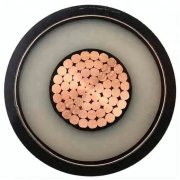
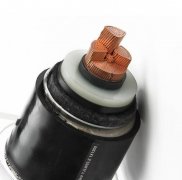
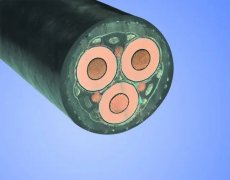
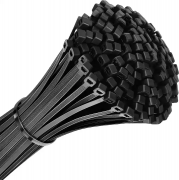
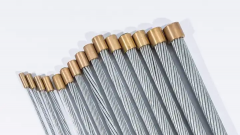
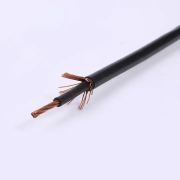
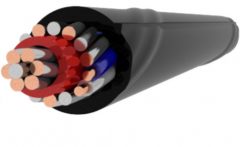
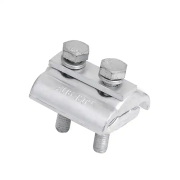

 Tel:
Tel:  Address: Zhengzhou, Henan,China
Address: Zhengzhou, Henan,China